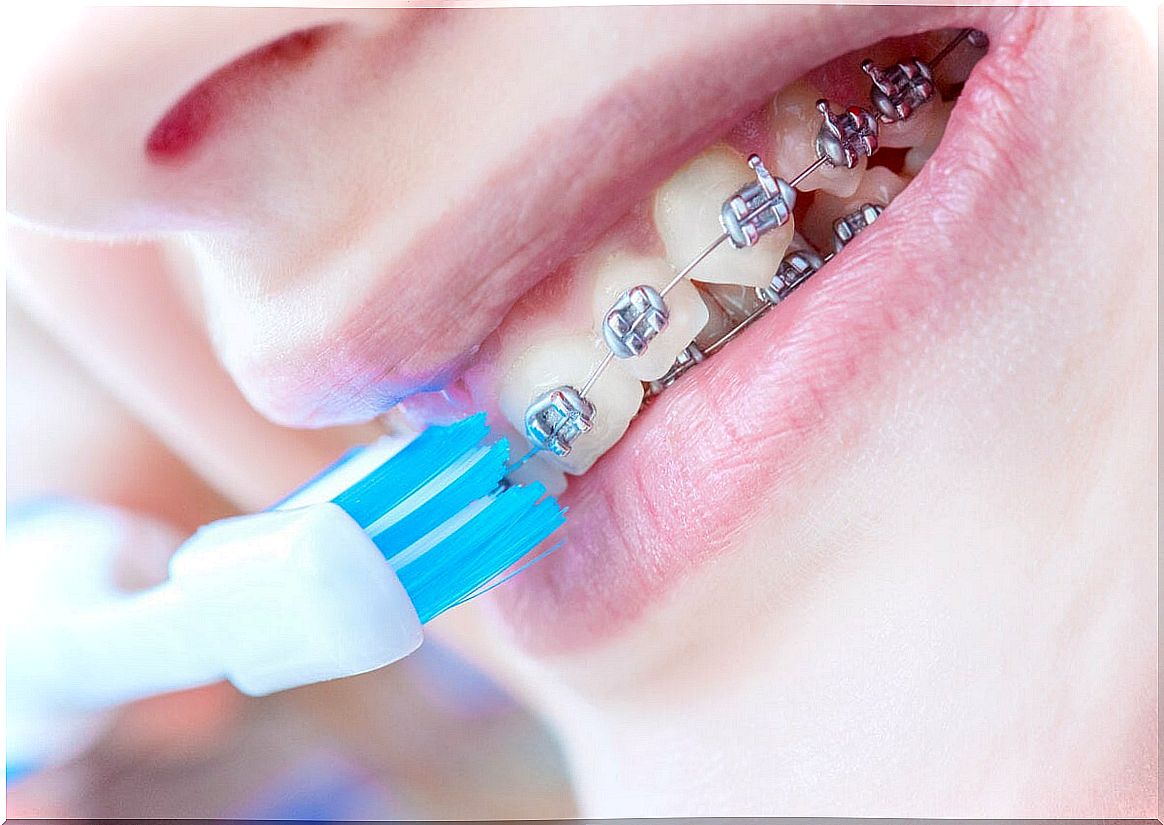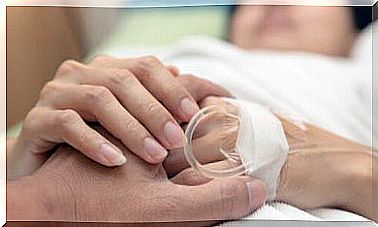8 Cares That Every Person With Orthodontics Should Follow
Orthodontics is the specialty of dentistry that is dedicated to studying, correcting and preventing problems in the development, shape and position of the dental arches. But this does not end with the professional, but there is care that orthodontic patients must follow.
Through guided movements of the teeth or the displacement of the jaws, the technique seeks to achieve a correct occlusion. An attempt is made to find a functional and morphological balance of the mouth and face. This, in addition to allowing the patient to bite correctly, improves the appearance of the smile and the face.
But to achieve the results, the patient must use some type of equipment that is performing and guiding the movements. Paying attention to your mouth during the process is essential. Here we mention some of the care that every person with orthodontics must follow to have a successful treatment.
Types of orthodontics
The choice of orthodontic treatment depends on the type of malocclusion to be treated, the age, the needs and possibilities of the patient. It will be the orthodontist who will evaluate the clinical case and define which is the best appliance for each situation.
There are various devices and methodologies to correct and prevent malocclusions. These are the ones that are used most often.
Functional appliances
These are removable appliances that modify the position of the muscles that mobilize the jaw. By changing muscle function, structural transformations are generated, such as the displacement of the teeth and changes in the jaw bones.
They are used in childhood, when the child has temporary and permanent teeth in the mouth.
Removable appliances
They are devices that the patient can put on and take off by himself. The longer they stay in the mouth, the better results are obtained. In this category are interceptive orthodontic appliances that are used in children to guide bone growth.
Clear invisible orthodontic trays, Invisalign type , are also included in this section. These are plastic trays made specifically for the patient’s mouth that are periodically changed. They apply forces and produce dental movements.

Fixed appliances
This type of orthodontics, as its name implies, is fixed to the teeth and the patient is not able to remove it. It is made up of brackets that adhere to the surfaces of the teeth and the metal arch that runs through them.
They individually mobilize each and every dental element in any direction. In general, they are preferred to use in adolescence, when the tooth replacement has finished, but the bone is still growing. Anyway, they can be prescribed for adults, obtaining satisfactory results.
8 cares during orthodontic treatment
The use of braces implies a series of cares that every orthodontic patient must take into account for final success. Here are some habits and attentions to consider.
1. Maintain thorough oral hygiene
The appliances promote the accumulation of bacterial plaque and increase the risk of tooth decay and gingivitis. Paying special attention to oral hygiene is vital as part of orthodontic care.
Tooth brushing should be done every day, after every meal, for 3 to 5 minutes. A soft bristle brush and fluoride toothpaste should be used.
The use of electric brushes and special manual brushes for orthodontics can be very useful to reach areas that are difficult to access. Flossing once a day is essential. Including oral irrigators to the hygiene routine is also very useful, especially when wearing braces .
Patients using removable appliances should remove them for regular mouth hygiene. Cleaning of the devices is paramount. Effervescent tablets, once a week, remove impurities effectively.
2. Avoid mouth discomfort
When the appliance is first used, it is normal for the body to need time to adjust to the new object. The first days there may be discomfort and even pain, but these sensations are temporary.
The use of braces can generate tooth sensitivity, which disappears with time and improves with the use of fluoride toothpastes. In addition, this type of device can injure the mucous membranes and trigger sores. They disappear on their own a few days later.
If the sensitivity is prolonged or the sores do not heal, it is always a good idea to consult the dentist to indicate some treatment and propose orthodontic care. The use of wax on the wires, local medication or anti-inflammatories may be necessary.
3. Be careful with some foods
This advice applies above all to patients with fixed orthodontics, since removable appliances must be removed at the time of eating and, after cleaning the mouth, they must be replaced.
You should avoid or reduce the consumption of hard and sticky foods such as sweets, nuts, whole apples, chocolates and nougats. The usual food should be eaten cut into small pieces.
4. Use them as long as possible
This does not apply to fixed appliances, as the patient wears them all the time. But for removable devices , wear time is a critical success factor.
The use of the appliance must be done with responsibility and try to use it for the time indicated by the orthodontist. At the beginning, 22 hours a day is usually necessary. They should only be removed to eat and brush your teeth.
5. Using elastic bands as indicated by the orthodontist is one of the care for orthodontics
In some cases, the use of intermaxillary elastic bands is necessary for treatment. The dentist explains to the patient how to place them and how they should be used. In addition, it gives you several replacement tires so that you can change them when necessary.
The use of these supplements depends on the time and progress of the treatment. For this reason it is important to follow the instructions of the orthodontist.
6. Attend the controls
When using orthodontics, regular follow-up appointments are necessary to review the progress of the treatment and make any necessary adjustments. It is important to attend them in the scheduled time.
The frequency of appointments is every 1 to 2 months, depending on the type of orthodontics and the time of treatment. In the beginning, more frequent visits are usually necessary.
7. Consult the dentist when necessary
With the use of appliances, situations may occur that require the intervention of the dentist. Sometimes you will have to go to the office to resolve them and other times you can make a telephone consultation to receive advice on orthodontic care.
In patients who use braces, it can happen that the arch sticks into the mucosa of the cheeks. In those cases, the ideal is to go to the dentist to cut the wire.
It can also happen that the arch breaks or a bracket detaches . Here, in general, one waits for the next scheduled appointment to replace it. But you should call the dentist and tell what happened in case it needs to be repaired sooner.
Patients who wear removable orthodontics and splints can lose them. In these cases, an appointment should be made to make them again or, in the case of invisible orthodontics, move on to the next tray.
8. Respect the retention period
When the braces have been removed, the use of retainers is necessary. They are responsible for maintaining the positions achieved with orthodontic treatment and prevent the teeth from returning to their initial position.
If this moment is not respected, all that has been achieved with the devices is lost. For this reason, to preserve the smile achieved with orthodontics, retainers should be used for the time indicated by the professional.

Tips for flossing with braces
Plaque removal is vital to maintaining oral health during treatment. The use of dental floss is one of the inescapable care of orthodontics to clean the areas that the brushes cannot reach.
Its use should be done once a day, taking 10 minutes for the entire procedure. It is a good idea to supplement with interdental brushes.
Patients with removable appliances can floss in the usual way, taking them out for insertion. Those who wear fixed orthodontics may have some complications at first due to the presence of braces and wires.
With practice and perseverance they will be able to master the technique. Here are some ways to floss for patients with braces :
- Traditional dental floss: pass the floss between the wire and the teeth, press on the faces of the teeth and make up and down movements. The thread should reach the gum area. The process is repeated in all dental elements.
- Dental floss threader: it is a plastic instrument in which traditional dental floss is placed. It has a handle that allows better maneuvering and being able to reach behind the wire and clean between teeth more easily.
- Dental tape: it is an ultra-fine, fluffy, thin and wide thread that glides on easily. It is used for people who feel pain, have swollen and bleeding gums. It is used in the same way as the traditional one.
- Oral irrigator: it is a tool that uses a constant stream of water. A conical tip is placed on the water floss and passed between the teeth and along the gum line, using the water pressure to sanitize. In addition, it can be used to clean food debris from braces and teeth.
The success of orthodontics depends on the care of the mouth
Orthodontics allows to prevent and correct bite problems, achieving a radiant smile and an effective bite. But this is possible if the mouth remains healthy during the treatment.
Taking care of oral health during orthodontic treatment is vital for it to be successful. It may be necessary to spend more time and incorporate new practices into your oral hygiene routine.
This avoids health problems and complications during the use of the devices. With orthodontics and the necessary care, having a healthy smile is possible.









